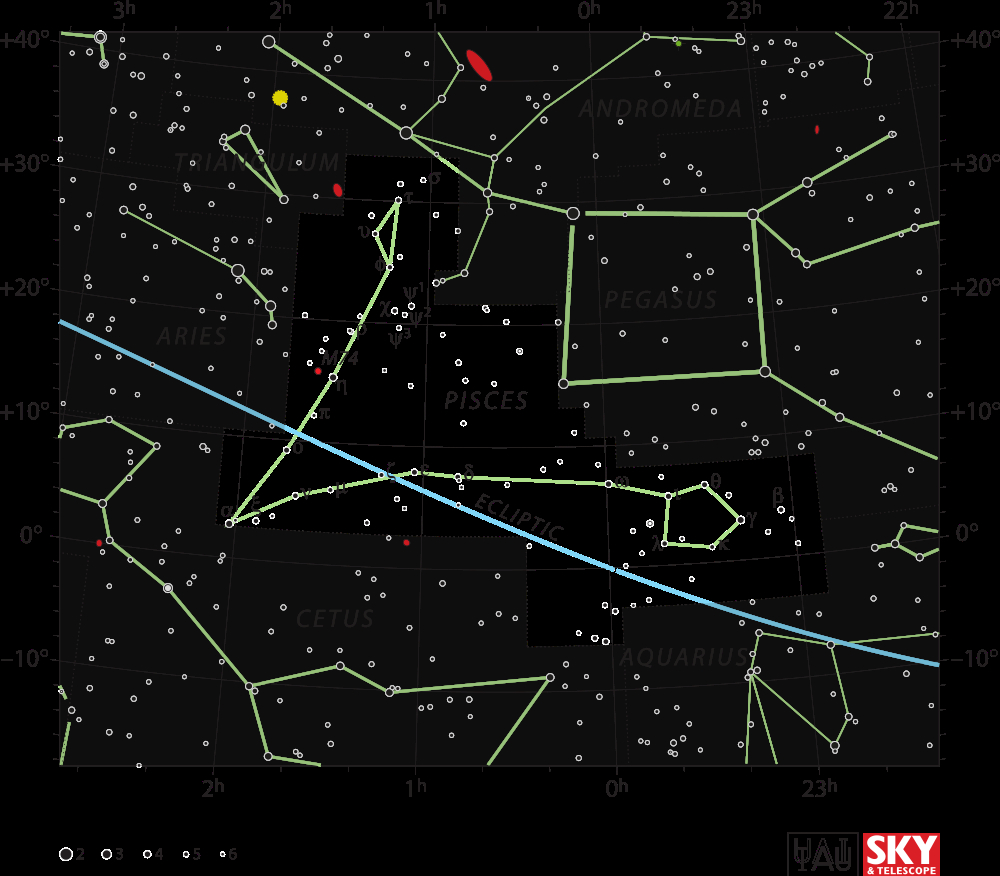
By IAU and Sky & Telescope magazine (Roger Sinnott & Rick Fienberg) [CC-BY-3.0], via Wikimedia Commons
"The Fishes"

By IAU and Sky & Telescope magazine (Roger Sinnott & Rick Fienberg) [CC-BY-3.0], via Wikimedia Commons
Abbreviation: Psc
Genitive: Piscium
Constellation family: Zodiac
Nearest constellations: Andromeda, Aquarius, Aries,
Cetus, Pegasus, and Triangulum
Right ascension: 0.86h
Declination: 11.08°
Visible between latitudes: +90° and -65°
Square degrees: 889
Luminary: Eta Piscium
Named stars: Alrescha, Fum al Samakah, and Torcularis Septentrionalis
Notable deep sky objects: M74
Pisces is a large constellation in the Northern Hemisphere that is best seen in November. It is one of the constellations of the zodiac and is the last of the 12 signs, after Aquarius and before Aries.
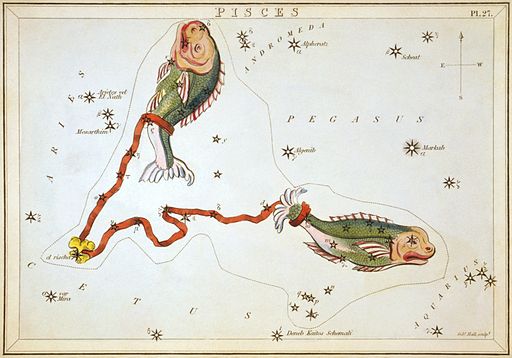
Sidney Hall [Public domain], via Wikimedia Commons
The two fish in Pisces used to be represented as facing (or swimming) in the same direction, but now they are more commonly depicted as pointing in opposite directions.
In Greek mythology, Pisces represents Aphrodite and Eros (or Venus and Cupid in Roman mythology) who turned into fish to escape the monster Typhon when he appeared and threatened the gods.
ZwCl 0024+1652 (galaxy cluster):
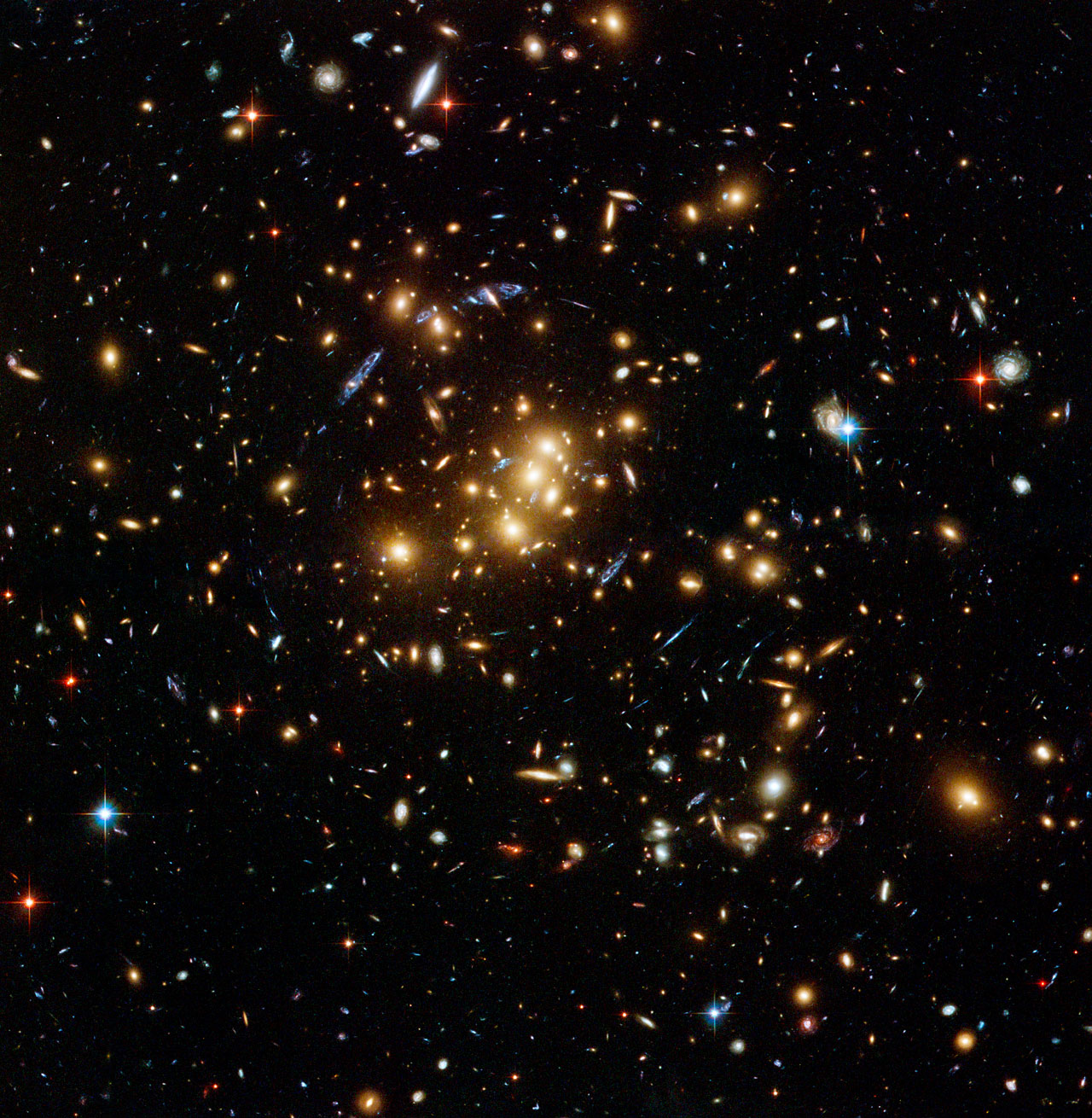
By NASA, ESA, M.J. Jee and H. Ford (Johns Hopkins University) [CC-BY-3.0], via ESA/Hubble
IRAS 01173+1405 (spiral galaxy CGCG436-030 in upper left plus companion galaxy in lower right):
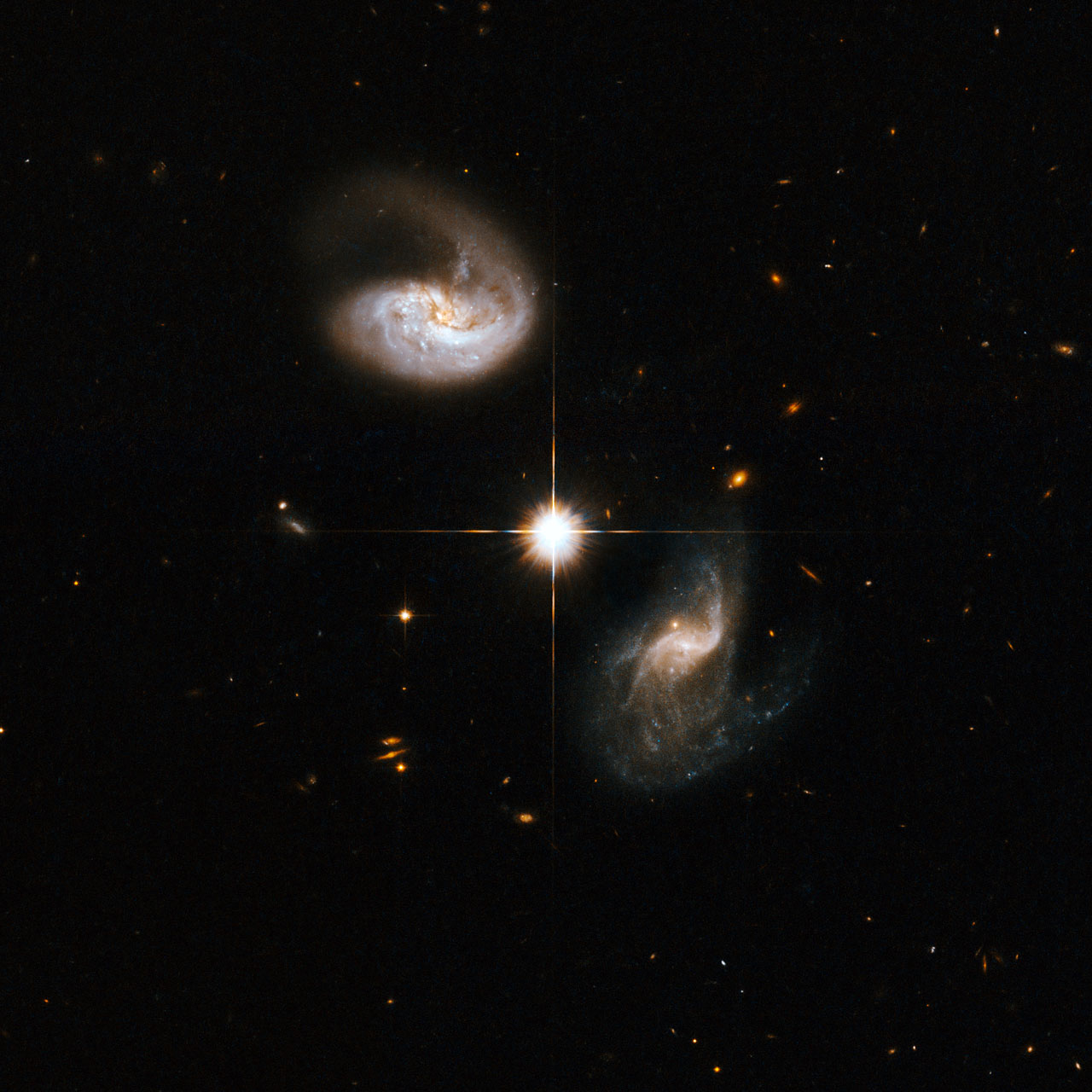
By NASA, ESA, the Hubble Heritage Team (STScI/AURA)-ESA/Hubble Collaboration and A. Evans (University of Virginia, Charlottesville/NRAO/Stony Brook University) [CC-BY-3.0], via ESA/Hubble
NGC 520 (interacting galaxies):
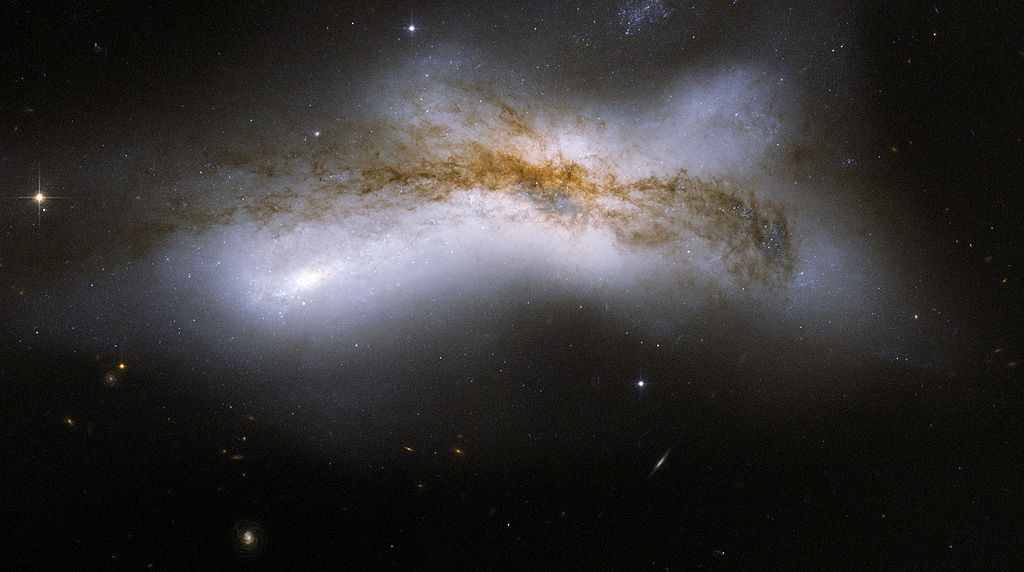
By NASA, ESA, the Hubble Heritage (STScI/AURA)-ESA/Hubble Collaboration, and B. Whitmore (STScI) [Public domain], via Wikimedia Commons
M74 ("The Phantom Galaxy") and surrounding region:
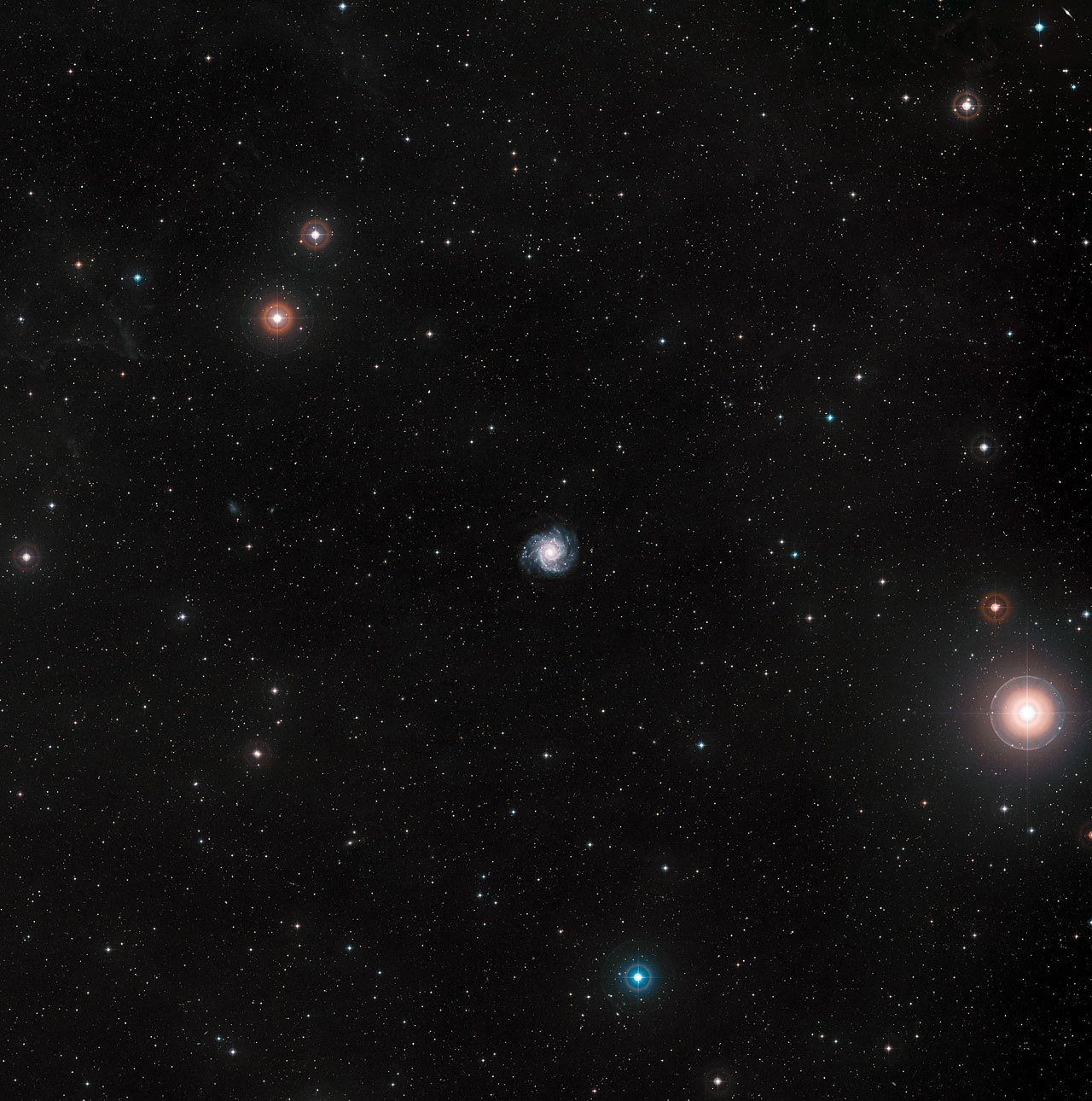
By NASA, ESA, and the Digitized Sky Survey 2, acknowledgement: Davide De Martin (ESA/Hubble) [CC-BY-3.0], via ESA/Hubble
A closer look at M74:
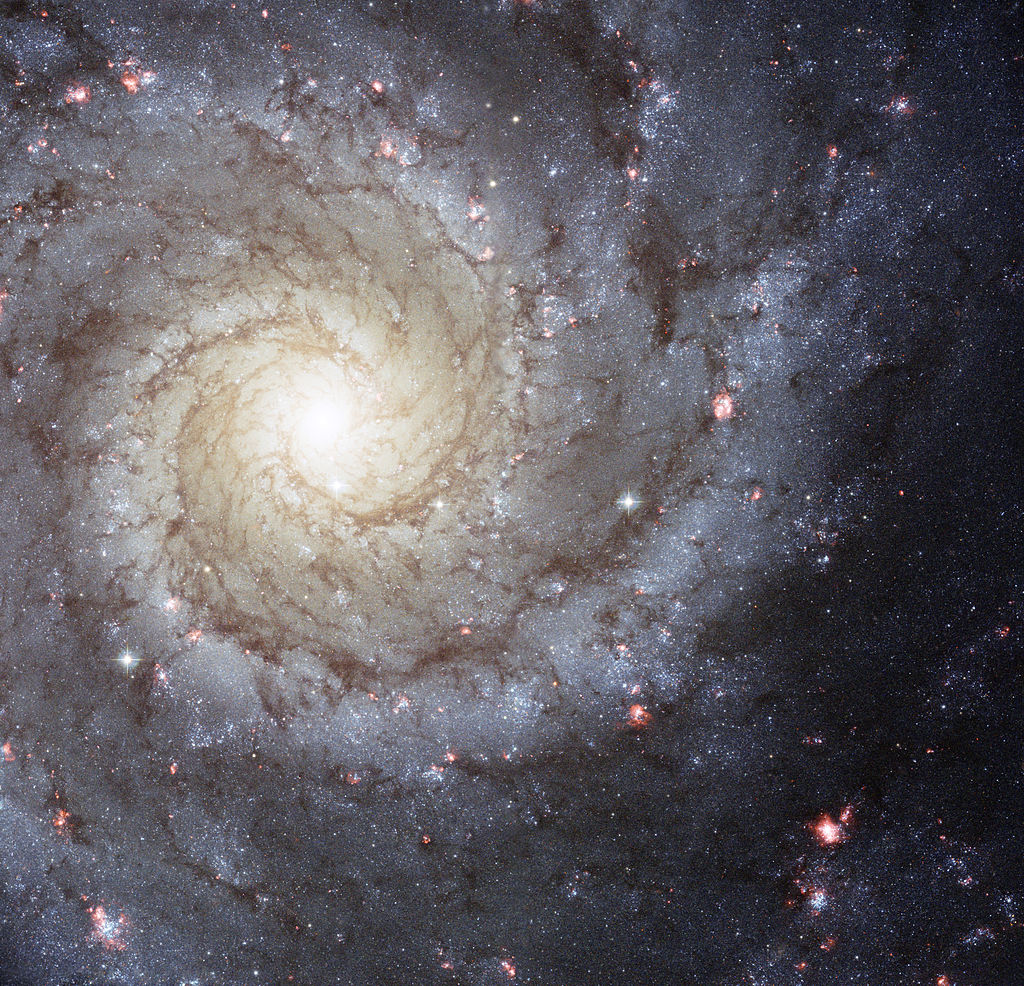
By NASA, ESA, and the Hubble Heritage (STScI/AURA)-ESA/Hubble Collaboration, acknowledgement: R. Chandar (University of Toledo) and J. Miller (University of Michigan) [Public domain], via Wikimedia Commons